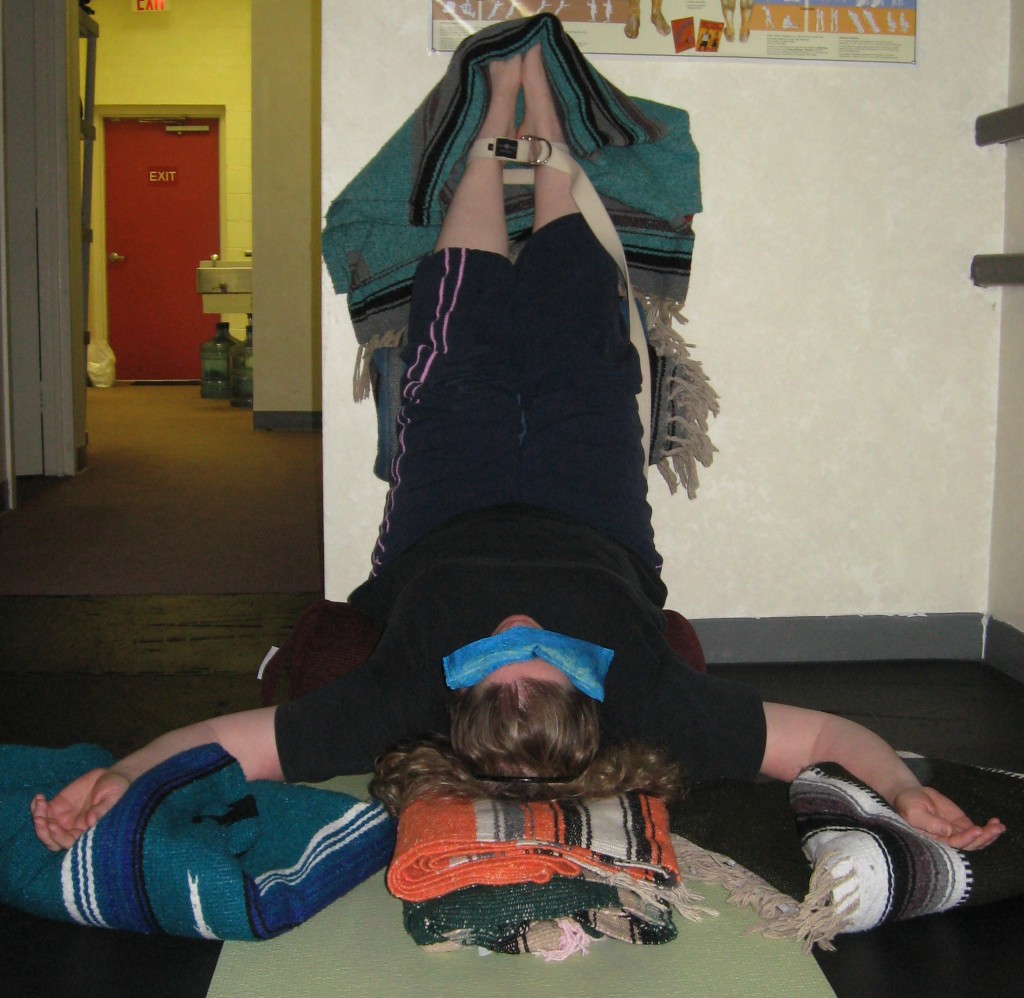A Break for the Legs
Most asana is active. But there is this deliciously sweet (and way better for you than those holiday goodies) subset of poses called restorative yoga. Instead of doing, these are poses of being. Restorative yoga teaches us how to relax deeply and completely.
Judith Lasater, who literally wrote the book on Restorative yoga says, “During deep relaxation, all the organ systems of the body are benefited, and a few of the
measurable results of deep relaxation are the reduction of blood pressure, serum triglycerides and blood sugar levels in the blood, the increase of the ‘good cholesterol’ levels, as well as improvement in digestion, fertility, elimination, the reduction of muscle tension, insomnia and generalized fatigue.”
Who doesn’t need something on that list?! During this busy Holiday month it is so important we take the time to relax deeply. So, each week I’ll be featuring a different restorative pose. Try practicing one of them every day at the end of your regular asana practice.
Today’s pose is Viparita Karani (legs-up-the-wall pose). I cannot think of a more wonderful break for legs that have carried you through this Holiday season!
The Set-Up
This may seem like a lot of props, but they are instrumental in encouraging your body to surrender to relaxation.
Here’s what you need:
- Yoga mat
- 2 bolsters (1 rectangle and 1 round, if possible)
- 1 block
- 1 eye bag
- 1 strap, optional
- 10 lb. sandbag, optional
- 4-6 blankets in the traditional fold (Judith Lasater calls this “Tadasana” for the blanket) as pictured here:
Place your mat at the wall with the short end of the mat touching he baseboard. Place the block in the center of the mat against the wall.
Place the rectangular bolster on top of the block, leaning against the wall. Put the round bolster on the horizontally on the mat a few inches away from the block.
Fold two blankets along the long edge. Stack one on top of the other and place them vertically to form a “T” shape with the round bolster.
Fold two additional blankets in half along the short edge. Place one on each side of the top of the mat.
Roll one additional blanket along the short edge. Place it to one side of your mat.
Place the last blanket, the sandbag, the strap and the eye bag beside your mat.
In the Pose
Come into child’s pose with your backside against the wall, and the edge of the round bolster directly beside your right hip. Tuck your right arm under your torso as you roll to your left onto the bolster and lengthen your legs along the wall/rectangular bolster.
The lumbar curve should be supported by the round bolster, with the tailbone dropping into the space between the round bolster and the block. The rest of the spine should be supported by the blankets.
Nestle the forearms and hands into the support of the two side blankets.
You may enjoy the support of the rolled blanket at the back of the knees, the sandbag on top of the feet, or the strap looped around the lower legs. If you are cold, you can drape another blanket over your legs. Experiment to find the support that is best for your body.

Place the eye bag over your eyes. Allow your legs to rest comfortably against the support on the wall as your torso relaxes into the support of the floor. Remain here for 5 – 15 minutes. When you are ready to come out, roll off the props, onto your side. Rest in the side-lying position for a few moments before sitting up.
Do your legs need a Holiday break? Give this one a try and let me know how they feel!
P.S. This post is part of a series on the basics of many of the most common poses. Look here for additional posts in this series.
P.P.S. You can find a certified restorative yoga teacher in your area in this directory.












